The REAL map of the London Underground? Cartographer creates ‘concentric circles and spokes’ version of famous map – and claims it’s more geographically accurate than TfL’s
It is one of the most recognizable maps in the world.
But the London Underground map has been updated, with its creator claiming the new version is more geographically accurate than the Transport for London (TfL) original.
Dr Max Roberts, an Essex cartographer, has created a map using ‘concentric circles and spokes’, showing the stations on all 11 London Underground lines, as well as the Elizabeth Line, Croydon Tramlink, Docklands Light Railway (DLR), Overground, Great Northern City Line and Thameslink Services.
Dr Roberts told MailOnline: ‘I think my map shows how bad the situation is with the official design.
‘My version uses unusual avant-garde design rules, yet is more orderly and spatially correct than a map that uses tried and tested standard design rules.’
The London Underground map has been updated, with its creator claiming the new version is more geographically accurate than the original Transport for London (TfL) version.
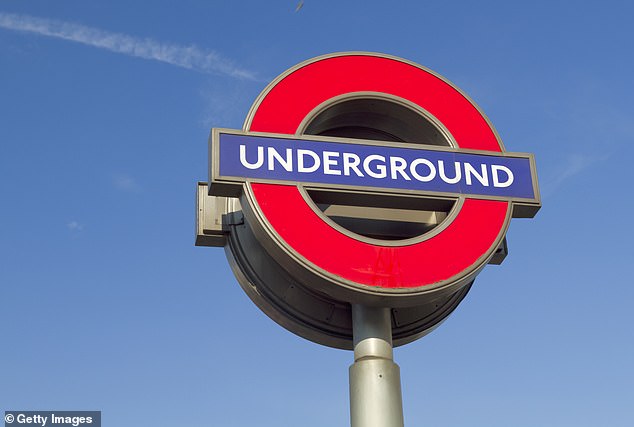
The original map of the London Underground is one of the most instantly recognisable maps in the world
The original map of the London Underground was drawn almost 90 years ago by Harry Beck, an electrical draftsman who based his map on the circuit diagrams he used in his daily work, rather than focusing on geography.
TfL explains: ‘Beck’s map was initially rejected by the publicity department as it was deemed too radical, but a successful proof printing showed it was exactly what the public wanted.
‘The result was an immediately clear and understandable map that would become an indispensable guide to London – and a model for transport maps around the world.’
To this day, millions of passengers use Beck’s map to navigate the city.
TfL has made a few changes and additions here and there, but Dr Roberts says the map still doesn’t meet requirements.
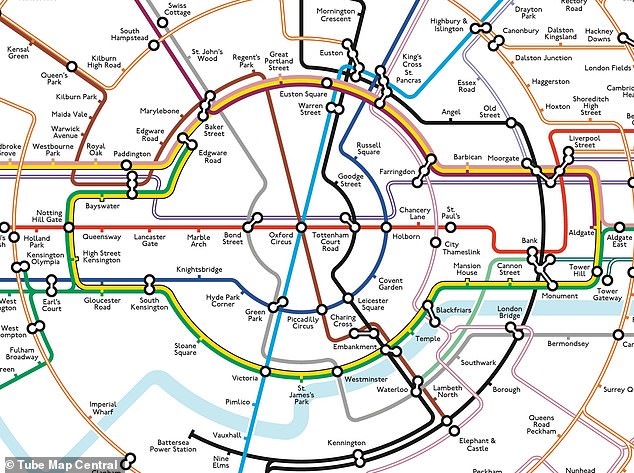
Dr Max Roberts, an Essex cartographer, has created a map of ‘concentric circles and spokes’ showing the stations of all 11 lines of the London Underground, as well as the Elizabeth Line, Croydon Tramlink, Docklands Light Railway (DLR), Overground, Great Northern City Line and Thameslink services.
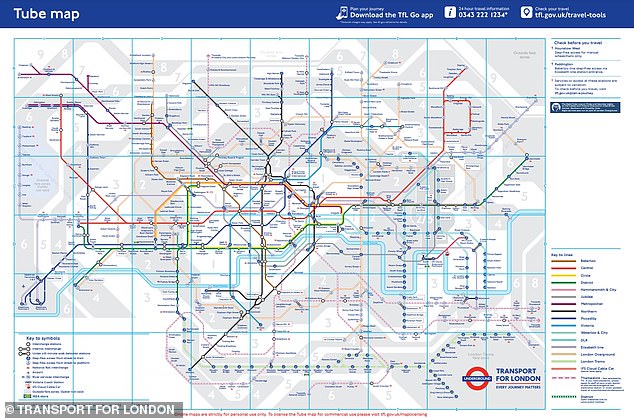
Today’s Underground Map: Used by millions of people every day to navigate London’s 402km network of Underground stations
‘The current Underground map is in very poor condition, especially the pocket version,’ he told MailOnline.
‘The lines twist and turn in all directions, disrupting the simplicity of the design. In addition, many parts of London are warped, with stations in completely the wrong places.
‘Part of the problem is that too much has been crammed into the map: the pocket version is almost exactly the same size as Henry Beck’s 1933 original, but has more than 100 extra stations.’
Dr. Roberts first tackled this problem in 2013, when he created “version 1” of his concentric circles and spokes map.
“The Overground loop from Highbury to Clapham Junction and back to Highbury had just been completed,” he explained.
‘Several people suggested that a new metro map with circles on it would be a good way to promote this. However, I found the designs that tried to do that a bit messy: the straight lines and the curves didn’t combine well.
‘So I tried a map based on concentric circles and spokes radiating from a central point. That’s much clearer.
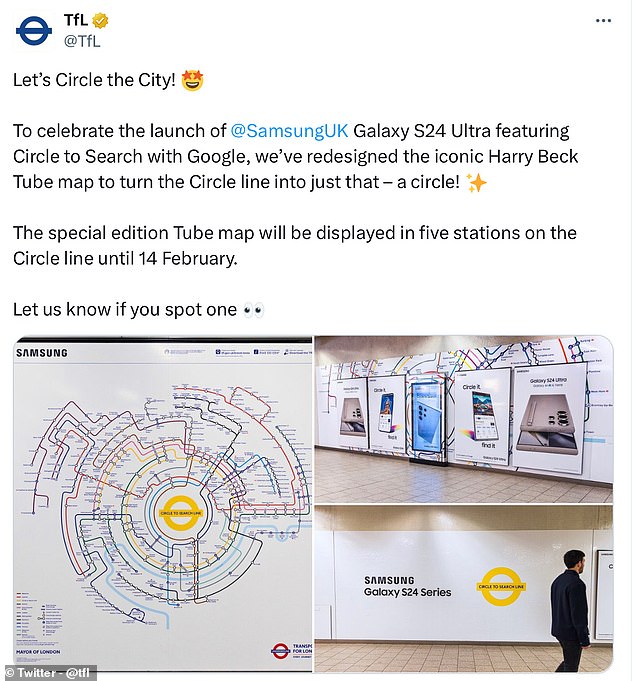
The cartographer was inspired to recreate his original map after seeing a similar map jointly released by TfL and Samsung to promote the Galaxy S24 Ultra
“This new map made a huge impact and went viral.”
Dr Roberts has now released version 2 of the map, which has been ‘completely updated and revised’.
The cartographer was inspired to recreate his original map after seeing a similar map jointly released by TfL and Samsung in January to promote the Galaxy S24 Ultra.
“(Samsung and TfL’s map) uses exactly the same design principles as my map, but was not intended for real-world use,” he explained.
‘The Overground and the Elizabeth Line were cut and the Underground lines were rearranged in all sorts of crazy ways.’
‘I wanted to show that the design principles I tried out in 2013 weren’t just for fun, but are still applicable today to a serious map that can be used for travel planning.
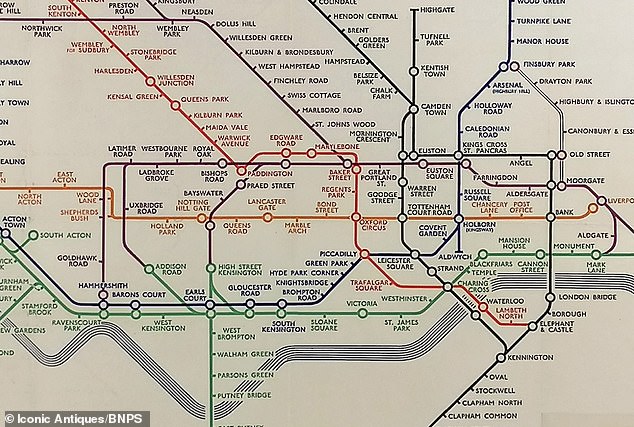
The original map of the London Underground (pictured) was drawn almost 90 years ago by Harry Beck, an electrical draftsman who based his map on the circuit diagrams he used in his daily work, rather than focusing on geography.
‘I worked hard to clearly display the routes of the lines and minimize geographic distortion where it matters most: how nearby stations relate to each other.’
Dr. Roberts posted the new map to X (Twitter) earlier this week and it has already been viewed over a million times.
‘This looks great. I can see why the real TfL map has evolved but this seems more relevant,’ commented one enthusiastic viewer.
Another added: ‘I’m starting to think this might actually be better than the real metro map. Something I never thought I’d say in my life.’
And someone joked, “THIS is what I need to figure out where things are!”
Although Dr Roberts claims his new map is more accurate than TfL’s, he does not expect it to be implemented by local authorities any time soon.
“I’m not sure what they would think of this design. It would be a big step for them to try something new,” he added.
